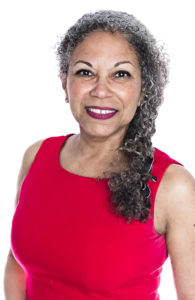
21 Aug Interpreting Then, Now and Beyond
The NAJIT Board of Directors wants to express our deepest appreciation to Giovanna (Gio) Lester for her years of service to the NAJIT Blog, which was re-branded as the NAJIT Observer under her leadership. Her tireless efforts have been a tremendous benefit and resource to NAJIT, our members, and the profession as a whole. We wish Gio continued success as the newly elected President of the Brazilian Association of Translators and Interpreters.
We are sure that you will enjoy this repost of an entry by Gio from 2014 that is still timely today.
Title VI was devised and implemented in the second third of the 20th century. Since then, our world has changed and so has our society. The demands and profiles of the services and tasks targeted by Title VI have also changed. We can do immigration hearings over telephone-video conferencing combo, or assist medical personnel from remote locations. Both are scenarios that respond to new demands stemming from population growth, among other things, and as such require new definitions of the interpreter’s professional profile involving other sets of skills and awareness, since we are no longer required to be present.
However, not enough has changed in the interaction of stakeholders, training, or outcomes. Judges still do not understand why interpreters must work in teams during long trials, lawyers still refuse to share information critical for the interpreters’ understanding of a case, medical personnel still resent the presence of the interpreter in their midst, etc. In addition, quality online training has only been available in the past few years. And as far as outcomes, we still find frustrated interpreters who cannot deliver a good quality performance because of all the obstacles we have to face while trying to improve quality of life for those around us, be it by making sure Justice is served, or that a diabetic patient receives the proper care, or that a lecturer reaches that foreign attendee at a conference.

The first one-and-a-half decades of the 21st Century have already witnessed a few changes that might result in an alignment of vision, perception and outcomes that can bring stakeholders closer together in their goals.
The awareness that providing language access to all may not be a tangible reality without making optimum use of technology has led to the development and use of devices and approaches that were not part of the vision of those who drafted Title VI. The use of available technology brings to light new sets of issues to be contended with, especially those related to availability, security/privacy and the limitations of the human element, such as physical and mental strain.
When speaking of human performance and service delivery users and providers of interpreting services cannot forget to take into account return on investment (ROI). After all, they depend on capital for training, equipment, testing development, plus the ancillary costs of personnel, offices, operational expenses, retrofitting courtrooms and hospitals for wireless service, acquiring and implementing equipment to provide the required security and privacy — the list is almost endless and grows constantly. For that reason alone language access should be a line item in every provider’s chart of accounts, an integral part of one’s business plan to ensure that adequate funding is procured and secured for supporting the services and the professionals who will be delivering them.
As professionals, we cannot afford to shy away from our responsibilities toward each other, our incoming colleagues and those we service. Professional associations are tools that we should use to expand our individual reach, taking advantage of their representation and services to educate our clients and colleagues. We should also share our expectations and needs with the associations of which we are members to help them grow and remain relevant to the profession and the professional. In doing so we ensure that they are defending our rights and interests, and help them in their mission. In my view, we the members are the professional associations. Our input helps their focus, our collaboration helps them grow, and our votes show the direction we want them to go.
Some of our colleagues are working hard to bring technology developers, users, associations and professionals together to bridge the existing gap. They heed the words of Abraham Lincoln, “The best way to predict the future is to create it.” Let’s get on with it.
Feature photo by fauxels from Pexels
 Brazilian-born Giovanna “Gio” Lester, the former Co-Chair of NAJIT’s Social Media Committee (2016-2020) and Editor of The NAJIT Observer, started her career in translation and interpreting in 1980. In 2009, she co-founded the Florida ATA Chapter (ATIF), served as its first elected president (2011-2012), and later as president of its interim board.
Brazilian-born Giovanna “Gio” Lester, the former Co-Chair of NAJIT’s Social Media Committee (2016-2020) and Editor of The NAJIT Observer, started her career in translation and interpreting in 1980. In 2009, she co-founded the Florida ATA Chapter (ATIF), served as its first elected president (2011-2012), and later as president of its interim board.
Gio has contributed to The NAJIT Observer since its inception in 2011 and has been its Editor since 2016. In 2017 she was appointed Chair of the Miami Dade College Translation and Interpretation Advisory Committee, which she had been a member of since 2014; her term ended in 2019.
Gio was recently elected President of Associação Brasileira de Tradutores e Intérpretes, ABRATES, which she had served as General Secretary (2018-2020). You can follow her on Twitter (@cariobana) and she can also be reached at gio@giolester.com.
Click here to read other posts by Gio.

Congratulations and thank you.
Why does the NAJIT Observer keep reposting old posts? Are there no new articles or NAJIT members that can contribute new posts?
Julie, we are going through a transition and yes, there are no new posts at this time. Would u like to collaborate? We are always looking for new authors.
This week we should have published a The Couch piece, but there was no contribution. Would you like to help?